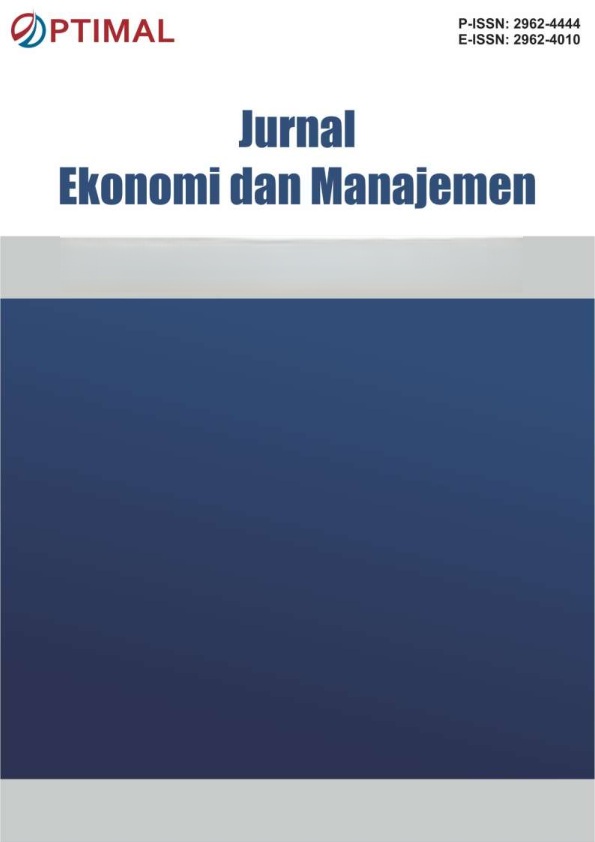Overconfidence Bias dalam Pengambilan Keputusan Keuangan pada PT Alumindo Light Metal Industry TBK
Studi Komparatif Model Altman Z-Score dan Springate dalam Memprediksi Kebangkrutan
DOI:
https://doi.org/10.55606/optimal.v5i3.7468Keywords:
Overconfidence Bias, Financial Decision-Making, Altman Z-Score, Springate, Bankruptcy PredictionAbstract
This study aims to analyze the influence of overconfidence bias in the financial decision-making of PT Alumindo Light Metal Industry Tbk and to evaluate the company’s financial condition using two bankruptcy prediction models: the Altman Z-Score and the Springate model. Overconfidence bias refers to the managerial tendency to overestimate their abilities and underestimate risks in making strategic decisions. This research adopts a descriptive quantitative approach using a case study method, with data collected from the company’s financial statements from 2019 to 2023. The results show a consistent decline in both Z-Score and Springate scores, placing the company in the distress zone over the last four years. Despite these warning signs, management continued to pursue expansion strategies and increase debt levels, indicating the presence of overconfidence bias. Both models demonstrated consistent results and proved to be effective early warning tools for detecting bankruptcy risk. This study contributes to a deeper understanding of the importance of mitigating psychological bias in corporate financial decision-making.
References
Altman, E. I. (1968). Financial ratios, discriminant analysis and the prediction of corporate bankruptcy. The Journal of Finance, 23(4), 589–609.
Barber, B. M., & Odean, T. (2001). Boys will be boys: Gender, overconfidence, and common stock investment. The Quarterly Journal of Economics, 116(1), 261–292.
Brigham, E. F., & Houston, J. F. (2011). Fundamentals of financial management (13th ed.). Cengage Learning.
Lestari, I. M., & Sari, N. K. (2021). Analisis prediksi kebangkrutan menggunakan model Altman Z-Score dan Springate pada perusahaan manufaktur. Jurnal Ekonomi dan Bisnis, 12(2), 112–120.
Malmendier, U., & Tate, G. (2005). CEO overconfidence and corporate investment. The Journal of Finance, 60(6), 2661–2700.
Pompian, M. M. (2006). Behavioral finance and wealth management: How to build investment strategies that account for investor biases. Wiley.
Putri, F. A., & Nugroho, L. (2020). Overconfidence bias dan pengaruhnya terhadap keputusan investasi: Studi empiris pada investor ritel. Jurnal Manajemen dan Bisnis, 17(1), 54–62.
Rahayu, A. (2022). Pengaruh overconfidence bias terhadap kinerja keuangan perusahaan publik. Jurnal Ilmu Ekonomi dan Bisnis Islam, 9(1), 23–32.
Springate, G. L. V. (1978). Predicting the possibility of failure in a Canadian firm. Unpublished MBA Thesis, Simon Fraser University.
Tversky, A., & Kahneman, D. (1974). Judgment under uncertainty: Heuristics and biases. Science, 185(4157), 1124–1131. https://doi.org/10.1126/science.185.4157.1124
Bursa Efek Indonesia. (2023). Laporan keuangan PT Alumindo Light Metal Industry Tbk. Diakses dari https://www.idx.co.id
PT Alumindo Light Metal Industry Tbk. (2023). Laporan tahunan 2022 dan 2023. Diakses dari https://www.alumindo.com
Otoritas Jasa Keuangan. (2022). Peraturan tentang transparansi dan keterbukaan informasi emiten.
Gitman, L. J., & Zutter, C. J. (2015). Principles of managerial finance (14th ed.). Pearson Education.
Kahneman, D. (2011). Thinking, fast and slow. Farrar, Straus and Giroux.
Downloads
Published
How to Cite
Issue
Section
License
Copyright (c) 2025 OPTIMAL Jurnal Ekonomi dan Manajemen

This work is licensed under a Creative Commons Attribution-ShareAlike 4.0 International License.








